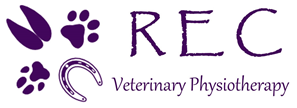Theo’s Story – Hip Dysplasia/Iliopsoas Muscle Pain
Written by Theo’s amazing owner, Niamh.
I got Theo at 18 months old and he had behavioural issues so I put him in agility and training to try to kill some energy as he was a toad!!
When did you first notice something was wrong?
I noticed something was wrong when he started to refuse to do the jumps and started to bunny hop/weight shifting in his back legs.
What did you do?
We had X-rays done which didn’t help at all and the vets told me to just crate him.
How has physiotherapy helped?
I pursed physio as it was not getting better and he was on long term pain meds. Tara finally found where the pain is coming from and set the right track for the road of recovery!
How is he doing now?
He is 10x better, went from 10 minutes leaded walks and struggling to 1/2 hours treks on the beach/ forest with his neurotic sister
What advice would you give to other owners going through something similar?
My advice is to know your dog, know what’s normal and what not because no one knows better than you!!
The physiotherapist says…
When I first met Theo, he was very sore and reactive around his hips. His vets originally referred him to me for hip dysplasia, but it soon became apparent that something else was going on. Theo is a happy boy and loves to play with his sister, and combined with his agility, we suspected an iliopsoas injury. With permission from the vets, we treated Theo with a combination of manual therapies, electrotherapies and gentle exercise and he is doing well. We now have a careful management plan to keep him on the right track.
How does physiotherapy help with hip dysplasia and muscle injuries?
Hip dysplasia means the abnormal development of the hip joint. Because of this, it causes painful rubbing between the two bones, instability and even luxation of the hip joint. Physiotherapy can help in both surgical and conservative cases to increase the muscle strength of the back leg to help hold the hip joint in place, making the joint more stable and less painful.
Muscle injuries can take a variety of different forms, from pulls and strains to full ruptures. These can be extremely painful and take a long time to heal. However, if left to it’s own devices, the scar tissue will form in irregular patterns, making the muscle weak and prone to reinjury. Physiotherapy techniques influence the scar tissue as it forms, helping it form in the correct line of stress, making the muscle stronger and maintaining range of motion. Physiotherapy also helps reduce pain and discomfort as the muscle recovers.


